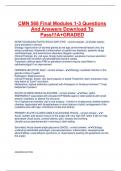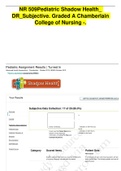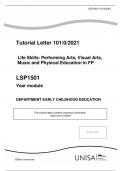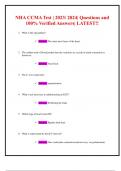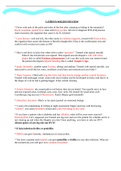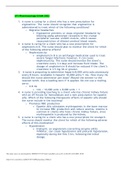Tentamen (uitwerkingen)
CMN 568 Final Modules 1-3 Questions And Answers Download To Pass!!!A+GRADED
- Vak
- Instelling
CMN 568 Final Modules 1-3 Questions And Answers Download To Pass!!!A+GRADED KERATOCONJUNCTIVITIS SICCA (DRY EYE) - correct answer...older adults; more prevalent in women Etiology: hypofunction of lacrimal glands as we age; environmental factors (hot, dry windy conditions), blepharitis (inflamm...
[Meer zien]
